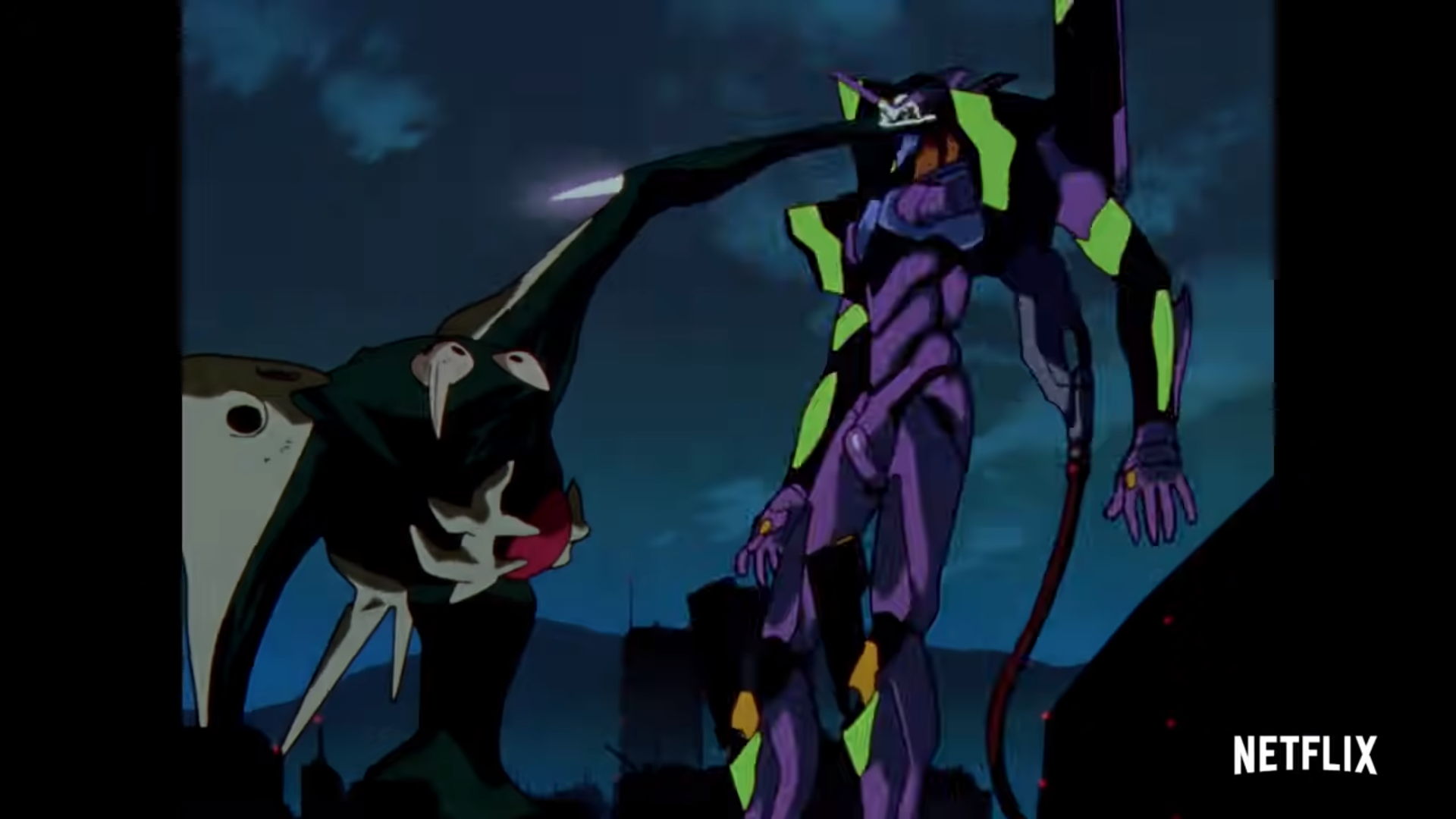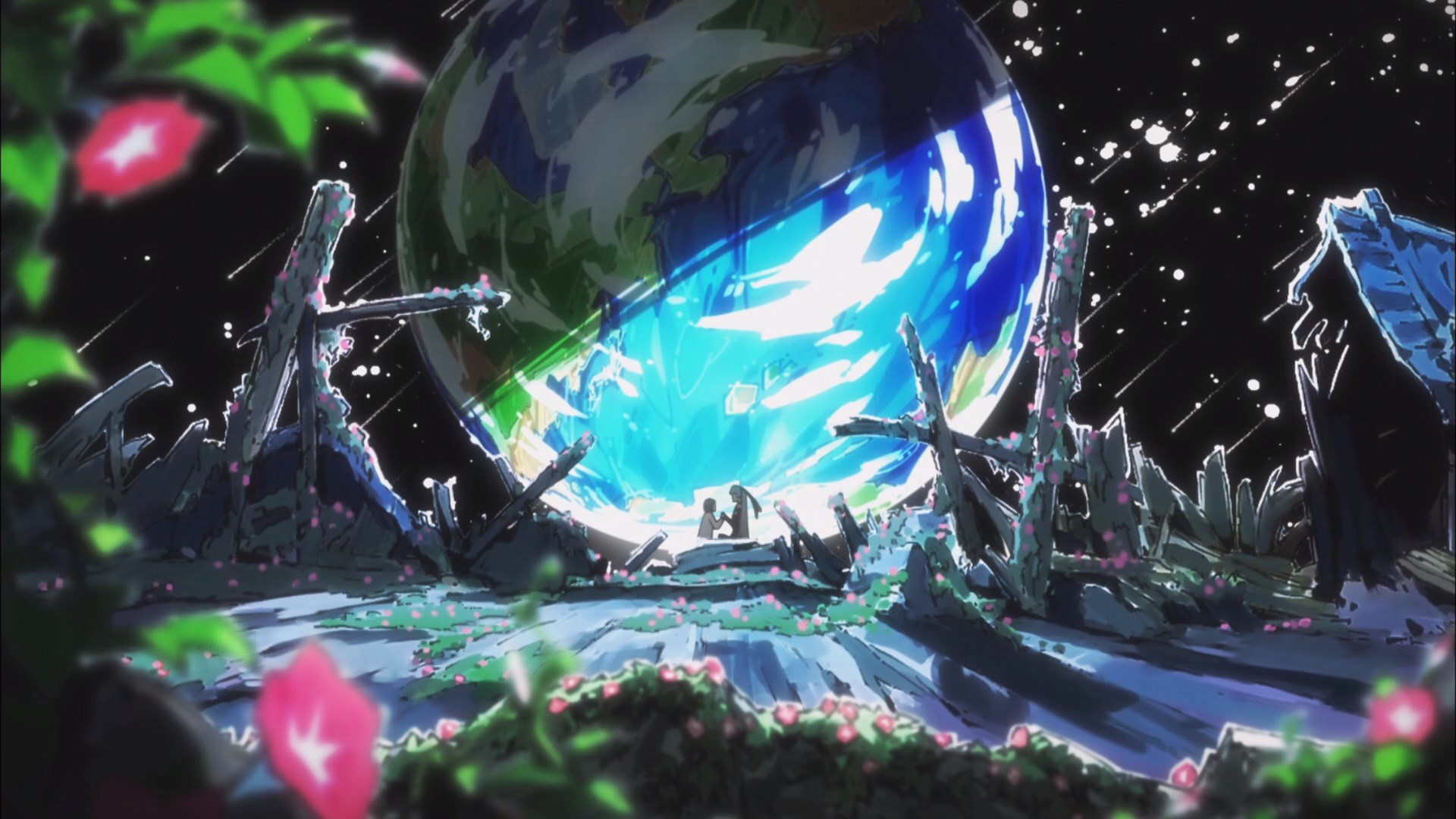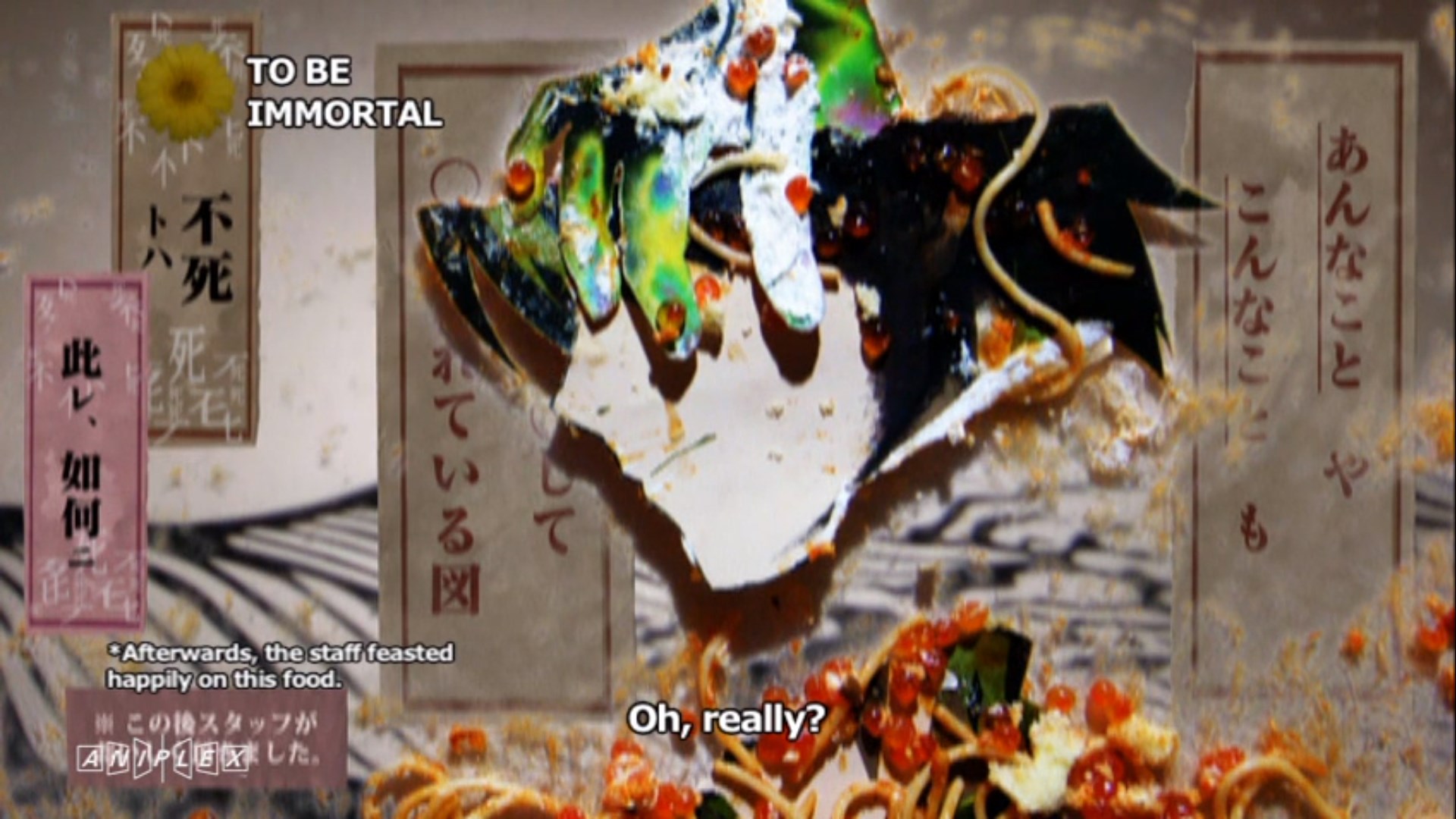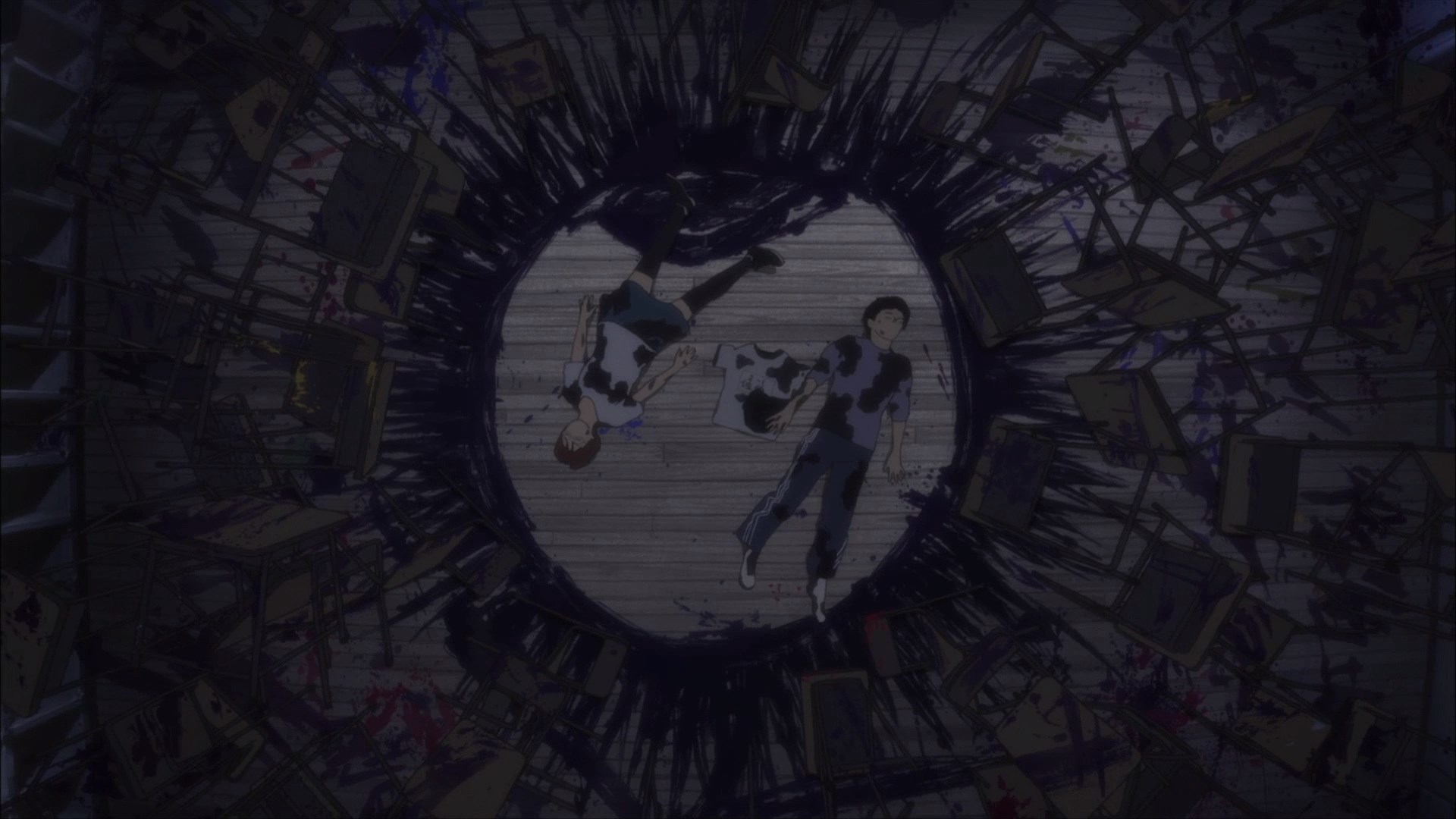Can you remember the last time something completely surprised you in art? Not just a great twist or reveal, but a fundamental “art can do that?” moment, when your conception of what was even possible in stories was altered forever. As a teenager, the first time I watched Neon Genesis Evangelion, I was so impressed by it that it forever changed my impression of animation, and got me started on the road to writing about anime as a career. Even all these years later, I’m still finding new things to discover in art, new techniques for conveying truth or beauty, and new ways for stories to touch my soul.

Image via Netflix
All of us have clear ideas of our “favorite kinds of stories.” There are genres we know are going to offer fun and satisfaction, creators we know speak on our wavelength, and visual styles that slot within our own preferred aesthetics. We all have preferences in terms of pacing, in terms of how intense or outrageous we prefer our drama, and in terms of how our favorite characters express themselves. Over time, we all build up a natural understanding of our own tastes and are able to use our past favorites to triangulate new shows that’ll fit within our wheelhouse. That’s all totally natural, and it’s also natural to want more of the things you’ve loved before.
But at the same time, for every established favorite or preferred trend, there must have once been a story that taught you to love those things. Our favorites are not predestined — they are the result of experience, and experience requires investigation. I’m sure you can all think of moments when a now-established favorite first surprised you by going against your assumptions about narrative or character and offering you something unlike anything before. Sometimes these moments offer pure emotional revelation, but other times they can fundamentally change our perspective on art, or even ourselves.

I cherish those moments, and highly value art that pushes against expectations or rambles on pathways a little less well-traveled. To be frank, I know I’m not naturally inclined to seek such art — I tend to prefer polished, aesthetically cohesive stories rather than the ones that strike out wildly, charting new territory in a messy way. But I know that without those brave pioneers, my own favorites would be terribly impoverished as well. Polished or crowd-pleasing art is lovely, but trailblazers create entirely new areas of drama and play — none of our favorite genres would exist without pioneers who proved their merits.
Watching these pioneers at work can be an electrifying experience, but unfortunately, the internet is naturally antagonistic toward discovering such works. We have collectively gotten very good at cataloging and comparing media, and refined our ability to create a reliable “preferred media diet.” Fandoms collate lists of related or similar properties. Franchises extend across mediums to offer an endless supply of the familiar. Streaming services have established algorithms that carefully tabulate your past watches, offering you a conveyor belt of media that’s all more or less just what you’re looking for.

Today, I am asking you to, for a moment, disregard all of those tools. Disregard how easy it is to find more of what you know you like, disregard the comfort and familiarity of your favorite franchises and genres. For just a moment, try out something unlike anything you’ve watched before.
Going beyond our comfort zone means that things will be less, well, comfortable. There might be friction in adjusting to slightly off-kilter media; the dialogue may seem a little strange to you, the pacing constructed with a different focus than you’re used to, and even the base forms of drama a little foreign or inexplicable. The more we watch the things we already like, the more our conceptions of “how stories should work” tend to be solidified. When art rampages wildly outside those preferred channels, we have a natural tendency to think of that as a mistake or weakness of the work.

The jolt of recognition is one of art’s most consistent appeals, and you’re less likely to get that sort of dopamine hit from something that feels deeply unfamiliar. Nonetheless, when your sensibilities disagree with the work you’re consuming, I would urge you to consider this disagreement as a result of conscious choice, rather than a failure by the artist. Rather than say “this work is clumsy or bad,” ask “what purpose might these strange choices be serving?” How does treating pacing or dialogue like this change the nature of the material? What emotional effect does that strange directorial choice provoke? As media gets further from your immediate wheelhouse, you can actually benefit from the distance of perspective — you see clearly the distinctiveness of a work’s choices, and through that, perhaps a glimpse of the artist’s intent behind them.
Additionally, by traveling so far afield, you can look back at your own favorites and recognize more of the choices they are making. When you only watch one kind of thing, all of its underlying assumptions can seem like the default assumptions of stories at large. When you move some distance away from those works and have a broader basis for comparison, you can better understand the active artistic decisions that informed your own favorites. Through this process, you might even come to love your own favorites more — or understand what exactly about them appeals to you and thus be better-equipped to seek it in other works.

Of course, as I said, it’s not exactly easy to discover the weirdest or most groundbreaking animation out there. Fortunately, though the era of streaming has ended the experience of just picking the weirdest-looking cover at your local rental store, there are still plentiful lands to ramble through. Netflix generally only covers the last few years of film and is incredibly limited even across that span, but there are resources for finding its hidden gems. Beyond that, there are many other lesser-known streaming services out there, with far more exhaustive libraries of their chosen focus. I’ve personally been having a terrific time with Shudder, which reaches quite deeply into the depths of horror history, and you can never go wrong with the Criterion Channel.
Even right here on Crunchyroll you can choose to pick a random show and try something outside your usual range. I’ve included a list below of some of Crunchyroll’s odder selections, and would urge you all to find and share your own discoveries.
It’s perfectly fine just to watch media to relax; art shouldn’t be work, and you’re under no actual obligation to broaden your artistic preferences. All I can say is that through my own commitment to watching broadly, I’ve found countless stories that spark that feeling of experiencing something genuinely new and having my understanding and appreciation of art enriched for it. Eventually, just as we appreciate the points of commonality within our favorite genres, we can build a network of commonality across storytelling as a whole, seeing how our favorite artists were inspired by influences as broad as our collective capacity to dream. Art is limitless — it is only our ability to engage with it that has gates and walls. Push back against those walls, and your love of art will surely flourish.

Kyousogiga: Director Rie Matsumoto has since more than proven her brilliance through the thrilling Blood Blockade Battlefront, but Kyousogiga offers an even more unfiltered glimpse at her unique aesthetic sensibilities, as well as her passion for distinctive characters. Kyousogiga is a show that feels energetic, ambitious, and endlessly creative in a way that reminds me of FLCL-era Gainax.
Flowers of Evil: Though this adaptation is by the same director as the phenomenal Mushishi, he uses a very different rotoscoped style to bring this alienating quasi-horror story to life. Flowers of Evil is a slow-burning masterpiece, building disorientation and dread across its whole run.
Keep Your Hands Off Eizouken!: I could fill an entire recommendation list with the works of Masaaki Yuasa, but his latest seems particularly appropriate, as it actually celebrates the complexity and passion of artistic creation in its narrative, all while serving as an example of creativity’s bounty in its own right. A beautiful, charming production from start to finish. And if you want a wilder Yuasa work, check out Mind Game!
Bakemonogatari: Tatsuya Oishi possesses a directorial style like little else in anime, drawing from broad film influences in order to infuse Bakemonogatari’s supernatural drama with an utterly unique aesthetic. How many shows throw actual spaghetti at the wall to convey a character’s mixed-up mind?
Showa Genroku Rakugo Shinjuu: Shinichi Omata (Kaguya-sama)’s masterful direction elevates a fascinating period drama, as we follow the evolution and potential conclusion of a unique theater form over multiple generations. A visual wonder, and also simply a thoughtful, well-told character drama.
Pop Team Epic: When faced with adapting the nonsensical gag 4koma, Kamikaze Douga swung for the fences, and crafted a mixed-media dreamscape like little else in anime. Absurd, hilarious, and profoundly imaginative, Pop Team Epic feels like a show that shouldn’t possibly exist.
Nick Creamer has been writing about cartoons for too many years now and is always ready to cry about Madoka. You can find more of his work at his blog Wrong Every Time, or follow him on Twitter.
Do you love writing? Do you love anime? If you have an idea for a features story, pitch it to Crunchyroll Features!
Source: Latest in Anime News by Crunchyroll!


Mag-post ng isang Komento